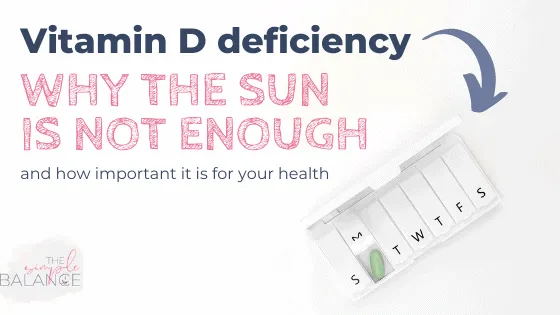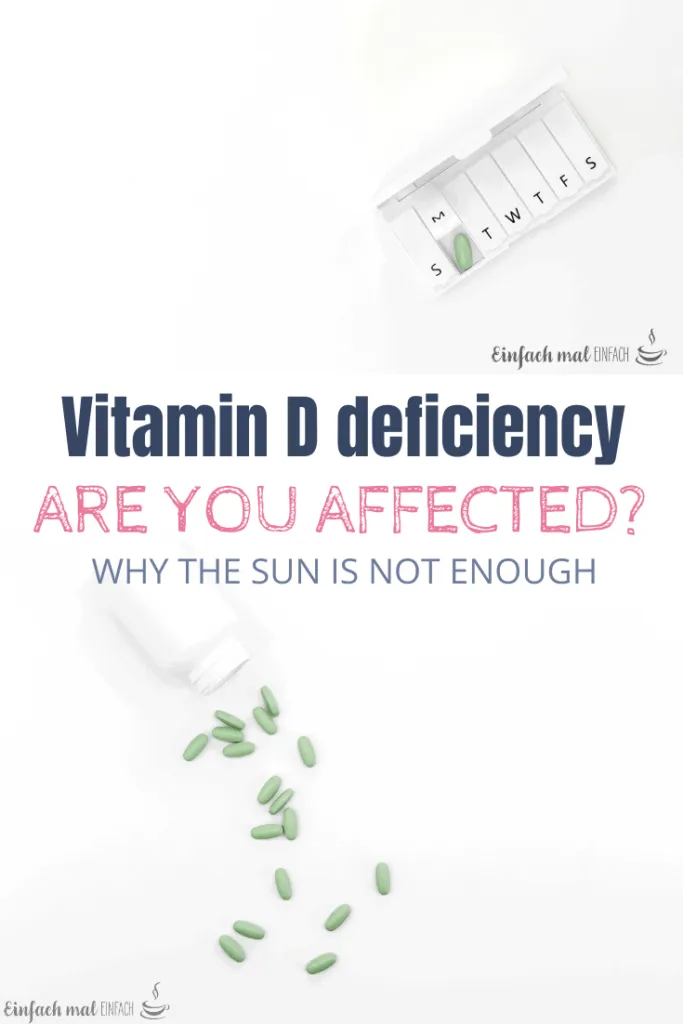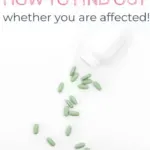Many, especially in the northern hemisphere, suffer from a vitamin D deficiency without even realizing it. Seasonal depression during the colder months in winter is only one of the indications. Find out here why the sun is not enough and what you can do.
Like most of us, I knew vitamin D mainly as little white pills that I had to give to my children when they were babies. In my training as a nurse, I saw quite a number of pictures of children with legs deformed to an O shape due to vitamin D deficiency.
Around the first birthday, prevention then stops. Rickets has been prevented, vitamin D is no longer an issue for healthy people. After all, the body itself can produce it with the help of sunlight.
Vitamin D for more than just healthy bones
However, vitamin D is responsible for more than "just" keeping our bones, teeth, and muscles healthy with the help of calcium.
It also plays a major role in the immune system, the strength of the heart muscle and insulin production. Thus, a sufficient supply of vitamin D also has an effect on health issues such as
- Prevention and treatment of cancer
- Multiple sclerosis
- Rheumatoid arthritis
- Diabetes
- Cardiovascular diseases
And last but not least, vitamin D seems to play an important role in regulating mood and warding off symptoms of depression.
However, the symptoms of an undersupply are rather broad and therefore not visible for a long time. After all, the most obvious consequences of a deficiency are rather long-term consequences. Winter depression and bad mood are still the clearest indications of a deficiency.
You might ask, if vitamin D is created in our body with the help of sunlight - what is the problem then?

Extensive vitamin D deficiency
In 2007, an article was published in the New England Journal of Medicine that clearly illustrates the problem:
It is estimated that about one billion people worldwide suffer from vitamin D deficiency. Mostly those who live further away from the equator in areas like Europe and North America, as well as North and Central Asia. According to a Harvard publication, it mainly affects people who live north of the 37th parallel.
Europe and North America thus lie right in the middle of the problematic zone. Our difficulty in getting enough sunlight exposure for vitamin D production lies in the following aspects:
Sunscreen prevents the formation of the sun vitamin by 99%. A sun protection factor of 15 is already enough for this, and even with SPF 8 the production is reduced by 92.5%. And who uses such low SPF sunscreen?
Only within a certain spectrum of sunlight can our skin form vitamin D. The sun's rays with the right wavelength only reach us in summer.
Those who are also blessed with a darker skin tone have an even harder time producing vitamin D because the skin pigments act as an extra filter.
In addition, the body's vitamin D production of over 70-year-olds is reduced by 75% due to age.
Are you getting enough sun?
To be able to produce sufficient amounts of vitamin D, arms and legs must be exposed to direct sunlight for about 30 minutes. And this without sun protection and between 10am and 3pm. And of course only during summertime.
Not at all easy, is it?
Solutions for vitamin D deficiency
If you cannot spend the winter in warmer, sunnier climates (an option I would much prefer), then a deficient self-production can only be compensated for through nutrition.
A daily intake of 800 to 1100 IU (International Units) per day is recommended.
But unfortunately, there is only a small selection of rich dietary sources that naturally contain vitamin D. And they are also not necessarily what we eat abundantly every day anyway.
Here is an overview of foods and the amount of vitamin D they provide:
- 100 g farmed salmon - 360 IU
- 100 g fresh wild salmon - 800-1000 IU
- 100 g sardines - 300 IU
- 100 g mackerel - 250 IU
- 100 g tuna - 200 IU
- 1 teaspoon cod liver oil - 400-1000 IU
- 100 g fresh shiitake mushrooms - 100 IU
- 100 g organic lard - 100 IU
- 1 egg yolk - 20 IU
Food as the main source of vitamin D
I don't know about you - but it would be difficult for us to reach 1000 IU per day and family member by eating the above-mentioned foods... Not to mention the conflict between overfishing and the health benefits of fish.
In many countries outside Europe, common foods such as milk, orange juice or breakfast cereal are therefore enriched with vitamin D3 to provide at least some extra supply. But even where that is the case, the recommended intake can usually only be achieved by taking vitamin D supplements. Or cod liver oil capsules.
A tanning bed also seems to be able to help, but of course, this involves other risks in the long run.
Vitamin D3 supplements
During my Clean Eating phase I refused to resort to something "unnatural" like capsules or pills.
But for the life of me I cannot tolerate the taste of cod liver oil. Not to mention the taste buds of my children... And even in the form of capsules cod liver oil has the unpleasant side effect of causing fishy burping...
This is how we ended up with vitamin D3 in the form of capsules, small pills or even as a tasteless oil.
Here is an overview of various products that we have tried and can recommend:
Last update on 2025-09-04 at 06:10 / As an Amazon Associate we earn from qualifying purchases. / Images from Amazon Product Advertising API
Advice on the selection of vitamin D supplements
The drops are a tasteless oil, of which one drop per day and person is sufficient. They are particularly suitable for small children or anyone who has difficulty with pills or capsules. Simply pour it onto a spoon full of yogurt, smoothie or applesauce and you're done. However to ensure the correct dose, do not mix the family dose into the complete smoothie.
The capsules are also tasteless. As soft gels, they are also easy to swallow.
The tablets are also very suitable for children. They are lactose based and melt on the tongue. They do not have a special aroma and are therefore very pleasant.
The recommended dose of 1000 IU per day is the same for children as for adults.
It is still controversial whether the commercially available deposit capsules with 10,000 IU per week are reasonable. That is why we will stick to daily intake for the time being.
Overdose?
By the way, you do not need to be afraid of an overdose. It is extremely rare and only causes problems at doses of over 50 000 IU per day over an extended period. Even 10 000 IU per day would be no problem.
So with a rough guideline of 1000 IU per day, nothing bad can happen - only your mood can improve.
And your overall health.
It's worth it, isn't it?





